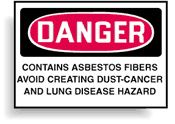 |
 |
| MSDS Topics |
Free Sites | FAQ's | Regulations | Glossary | Software | Suppliers |
| Books | Forum | Poll | Fun stuff | Quiz | Store | |
| MSDS and safety supplies | Search ALL our MSDS info | |||||
 | |||
 |
 |
 |
|
| Title: 01/09/1990 - Procedures a demolition and salvage constructor could employ in lieu of providing material safety data sheets for specific metals. | |
| Record Type: Interpretation | Standard Number: 1910.1200 |
January 9, 1990
Mr. Robert L. Brooks
Right-to-Know Management Systems, Inc.
113 Wembley Road
Wilmington, Delaware 19808
Dear Mr. Brooks:
This is in response to your letter of October 23, 1989, addressed to Charles Adkins, Director of the Occupational Safety and Health Administration's (OSHA) Directorate of Health Standards. Your letter was referred to me for response and I apologize for the delay in this response. In your letter, you outlined the procedures a demolition and salvage constructor could employ in lieu of providing Material Safety Data Sheets (MSDS) for specific metals and inquired whether doing so would assure that the contractor would not be cited for failure to have specific MSDS on hand.
The procedures you have outlined in your letter meet the requirements of the Hazard Communication Standard (HCS). These procedures include obtaining MSDS on various types of metals and common alloys, reviewing these MSDS in training sessions and keeping them at each job site, explaining the hazards of metal fumes and the proper precautions, as well as complying with all other hazard communication requirements. As you are aware, the MSDS you obtain will not be specific to the actual material being demolished. Adequate information on the "generic" MSDS should be shared with affected employees during the training sessions. In other words, the "generic" MSDS are only for training purposes to provide general information to affected employees. They will not contain the substance-specific information that other MSDS required under the HCS and produced by chemical manufacturers will contain, e.g., most importantly, emergency contact information.
It is not possible for me to provide you with categorical assurance that your client will not be cited using the procedures you outlined, since the ultimate responsibility for determining violations on a situation-by-situation basis rests with the OSHA compliance officers and their on-site evaluation of the effectiveness of the employer's overall hazard communication program.
A work situation similar to your client's circumstances is anticipated in the preamble to the Hazard Communication Standard which was published in the Federal Register on August 24, 1987. In a discussion of the article exemption, OSHA states:
|
The intent of the Hazard Communication Standard is for the employer to provide information to employees on the hazards they encounter in the workplace. These hazards include those brought into the workplace by the employer as well as, in the case of your client, hazards to which the employees are exposed even though the employer is not responsible for the existence of those hazards. For example, employees of a demolition crew may be exposed to asbestos which was not brought into the workplace by the employer. Those employees must nevertheless be informed of the hazards of asbestos and means by which exposure can be prevented, even though a MSDS for the specific asbestos material is not required to be available. Your client is expected to incorporate into his or her training program information regarding the hazards the employees may encounter since he or she will most likely be unable to obtain the actual MSDS for the materials in question. I hope this information is helpful. For your further reference, OSHA's Philadelphia Regional Office's Hazard Communication Coordinator is an excellent resource for any additional questions you may have or for HCS materials you may need. The telephone number of the Regional Office is (215) 596-1201. Please feel free to contact the Regional Office or me again if we can be of further assistance. |  If you have an asbestos hazard, good signage and labeling are critical. Signs from Safety Emporium can help.
|
Thomas J. Shepich, Director
Directorate of Compliance Programs
January 25, 1990
Mr. Robert L. Brooks
Right-to-Know Management Systems, Inc.
113 Wembley Road
Wilmington, Delaware 19808
Dear Mr. Brooks:
This is in response to your letter of January 4 to the Occupational Safety and Health Administration (OSHA) requesting a response to your letters of November 15 and 24, 1989, concerning procedures for compliance with various provisions of OSHA's Hazard Communication Standard.
A copy of our letter to you of January 9 is enclosed, which responds to the concerns you raised in your original letter. Again, we apologize for the delay in your receipt of this response and trust that the information in our letter to you adequately addresses your questions.
Please feel free to contact us again if we can be of further assistance.
Sincerely,
Gerard F. Scannell
Assistant Secretary
The official, public domain, OSHA version of this document is available at http://www.osha.gov/pls/oshaweb/owadisp.show_document?p_table=INTERPRETATIONS&p_id=19906&p_text_version=FALSE